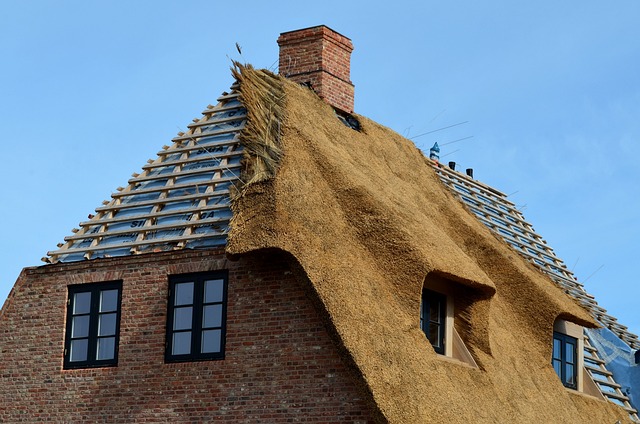Choosing the right roofing material for your home is a crucial decision that impacts not only the aesthetic appeal but also the durability, maintenance, and overall value of your property. With various options available on the market, selecting the best roofing material can be overwhelming. In this comprehensive guide, we will delve into the most popular roofing materials, exploring their advantages, disadvantages, and suitability for different climates and architectural styles.
Asphalt Shingles
Asphalt shingles are by far the most popular roofing material in the United States, and for good reason. They are affordable, durable, and come in a wide range of colors and styles, making them an ideal choice for many homeowners.
Pros of Asphalt Shingles:
- Affordability: One of the most budget-friendly options available, making it accessible for a wide range of homeowners.
- Versatility: Asphalt shingles are available in a variety of styles, colors, and thicknesses, allowing homeowners to customize their roof to suit the architectural style of their home.
- Ease of Installation: Asphalt shingles are relatively easy to install, which reduces labor costs and installation time.
- Durability: They can last between 15 to 30 years, depending on the quality of the shingles and the climate they are exposed to.
Cons of Asphalt Shingles:
- Lifespan: While asphalt shingles are durable, they don’t last as long as some premium materials like metal or tile roofing.
- Environmental Impact: Asphalt shingles are not the most eco-friendly option, as they are petroleum-based and typically end up in landfills after they are replaced.
- Vulnerability to Extreme Weather: In areas prone to severe storms, asphalt shingles can be more prone to damage than other materials.
Metal Roofing
Metal roofing has gained popularity in recent years due to its modern appearance, energy efficiency, and durability. Metal roofs are available in a variety of styles, including panels, shingles, and tiles, making them suitable for various architectural designs.
Pros of Metal Roofing:
- Longevity: Metal roofs can last 40 to 70 years, depending on the material, which is significantly longer than asphalt shingles.
- Durability: Metal is resistant to wind, rain, snow, and even fire, making it an excellent choice for homes in areas prone to extreme weather conditions.
- Energy Efficiency: Metal roofs reflect sunlight, which can help reduce cooling costs in hot climates.
- Low Maintenance: Once installed, metal roofs require very little maintenance, making them a long-term cost-effective choice.
Cons of Metal Roofing:
- Cost: Metal roofing is more expensive upfront than asphalt shingles, which can be a deterrent for homeowners on a budget.
- Noise: Metal roofs can be noisier than other materials, especially during heavy rain or hailstorms, though this can be mitigated with proper insulation.
- Complex Installation: Metal roofing requires specialized installation, which can increase labor costs.
Clay and Concrete Tiles
Clay and concrete tiles have been used for centuries and are known for their durability and distinct appearance. They are often associated with Mediterranean, Spanish, or Southwestern-style homes, but can complement a variety of architectural designs.
Pros of Clay and Concrete Tiles:
- Durability: Clay and concrete tiles can last 50 to 100 years with proper maintenance, making them one of the longest-lasting roofing materials.
- Fire Resistance: Both clay and concrete tiles are highly fire-resistant, making them a safe option for homes in wildfire-prone areas.
- Energy Efficiency: These tiles have natural insulating properties, helping to regulate indoor temperatures by keeping homes cooler in the summer and warmer in the winter.
- Aesthetic Appeal: Clay and concrete tiles add a distinct, timeless look to homes, often increasing curb appeal and property value.
Cons of Clay and Concrete Tiles:
- Weight: These tiles are heavy, which means your home must have the structural support to handle the added weight.
- Cost: Both materials are expensive compared to asphalt shingles and other options.
- Fragility: While durable, clay and concrete tiles can break if walked on or if struck by heavy debris.
Wood Shingles and Shakes
Wood shingles and shakes offer a natural, rustic appearance that can enhance the look of certain architectural styles, such as cottages or cabins. They are typically made from cedar, redwood, or other types of wood.
Pros of Wood Shingles and Shakes:
- Aesthetic Appeal: Wood shingles provide a unique, natural look that many homeowners find appealing.
- Eco-Friendly: Wood is a renewable resource, and some manufacturers offer sustainable options that are harvested responsibly.
- Insulation: Wood shingles provide natural insulation, helping to regulate indoor temperatures and reduce energy costs.
Cons of Wood Shingles and Shakes:
- Maintenance: Wood shingles require regular maintenance, including treatments for mold, mildew, and insect infestations.
- Fire Risk: Unless treated with a fire-resistant coating, wood shingles pose a higher fire risk than other materials.
- Cost: High-quality wood shingles and shakes can be expensive, both in terms of the material itself and the maintenance required.
Slate Roofing
Slate roofing is one of the most premium options available, known for its unmatched durability and timeless beauty. It has been used for centuries and is often associated with historic or high-end homes.
Pros of Slate Roofing:
- Durability: Slate roofs can last over 100 years, making them one of the longest-lasting materials available.
- Aesthetic Appeal: Slate offers a natural, elegant appearance that can significantly enhance a home’s curb appeal.
- Fire Resistance: Slate is naturally fire-resistant, making it a safe choice for homes in fire-prone areas.
- Low Maintenance: Once installed, slate roofs require very little maintenance and can withstand extreme weather conditions.
Cons of Slate Roofing:
- Cost: Slate is one of the most expensive roofing materials, both in terms of the material itself and the installation.
- Weight: Like clay and concrete tiles, slate is heavy, so your home must have the structural capacity to support it.
- Complex Installation: Installing a slate roof requires specialized skills, which can make labor costs higher than other materials.
Synthetic Roofing Materials
Synthetic roofing materials, such as rubber, plastic, or polymer-based products, are designed to mimic the appearance of more expensive materials like slate or wood but come at a lower cost.
Pros of Synthetic Roofing Materials:
- Affordability: Synthetic materials are generally more affordable than their natural counterparts.
- Lightweight: Unlike slate or clay tiles, synthetic materials are lightweight, making them easier to install and suitable for most homes.
- Durability: Many synthetic roofing products are designed to be resistant to weathering, UV rays, and impact damage.
- Versatility: Synthetic materials can be made to resemble a variety of styles, from wood shakes to slate tiles, allowing for customization at a lower cost.
Cons of Synthetic Roofing Materials:
- Longevity: Synthetic materials may not last as long as their natural counterparts, though this varies depending on the specific product.
- Environmental Impact: Some synthetic materials are not as eco-friendly as natural options, and their production can contribute to environmental degradation.
- Aesthetic Limitations: While synthetic products can mimic the appearance of natural materials, they may not offer the same level of authenticity or visual appeal.
Conclusion
When choosing the right roofing material for your home, it’s important to consider factors such as your budget, climate, aesthetic preferences, and long-term maintenance needs. Whether you opt for the affordability of asphalt shingles, the durability of metal roofing, or the timeless beauty of slate, each material offers its own set of advantages and disadvantages.


